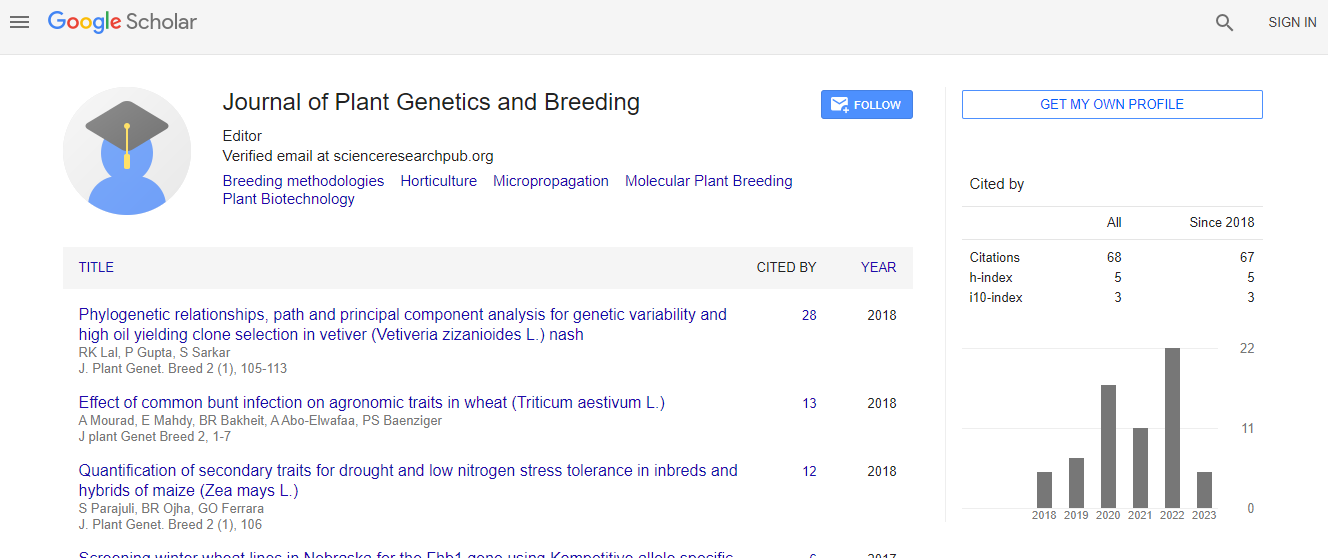Plant Pathology 2018: Endophytic Fungi of the Prosopis Cineraria- Teena Agrawal, Banasthali University, India
*Corresponding Author:
Copyright: © 2020 . This is an open-access article distributed under the terms of the Creative Commons Attribution License, which permits unrestricted use, distribution, and reproduction in any medium, provided the original author and source are credited.
Abstract
Introduction: Plants are the greatest sources of the metabolites, they have been used for the medicines from the long times, still in many parts of the world, they are the reliable and the easy kinds of the medications, WHO still promote these medicines in the developing country. The endophytic fungi are the very diverse kinds of the world of the fungi, they create and they develop the very vast kinds of the world of the fungi, many of the fungi are pathogenic and they create the problem with the normal functioning of the tree, they produces the many kinds of the disorders which causes the severs plants pathogenic diseases in the plants and sometimes they are responsible for the destructing catastrophic effects.
Findings: Endophytic fungi are the symbiotic kinds of the microbiota which are found in the living host’s tissues, they are found in the leaves, as well as the other parts of the plants also, generally, they are the members of the deutetromycetes and the basidiomycetes. They colonize the tissues beneath the epidermis and they collect in this places. However still today the complex metabolism of these fungi is the matter of the great speculations. They not only sometimes beneficial to the trees but also they are the reservoirs of the complex metabolites of the various significances, their isolation of the metabolites is still the matter of the great concerns, hers in our research work we have tried to work on the endophytes fungi compels of the tree entitled ad the Prosopis cineraria of the mimosidae group. The tree is very valuable medicinally and the endophytes we isolated are taxonomically very diverse and unique kinds. We found some of the genera’s which are not present occasionally in the trees. We identified the genera’s from the IARI culture collection of India. However detailed physiological work is required for the correct identification of the metabolites and their pharmacological values. Enzymes produced by microorganisms are employed in the treatment of cancerous cells. L-asparaginase is one such enzyme routinely employed in chemotherapy particularly for cancerous tumors of white blood cells. The enzyme deprives the cancer cells of an essential amino acid asparagine by catalyzing its breakdown ultimately leading to starvation and death. L-asparaginase is specific in its action and does not pose threat to the survival of normal cells. Bacterial asparaginases are currently in use under different trade names such as Elspar from Escherichia coli and Erwinase from Erwinia chrysanthemi. But the enzymes derived from bacteria induce mild to severe immune responses. L-asparaginase derived from eukaryotes may induce relatively least toxicity and feeble immune response since the anticancer activity has been related to the presence of the alkaloids in the plant parts of T. heyneana, the present study deals with the isolation of fungal endophytes and screening them for L-asparaginase activity.

 Spanish
Spanish  Chinese
Chinese  Russian
Russian  German
German  French
French  Japanese
Japanese  Portuguese
Portuguese  Hindi
Hindi 